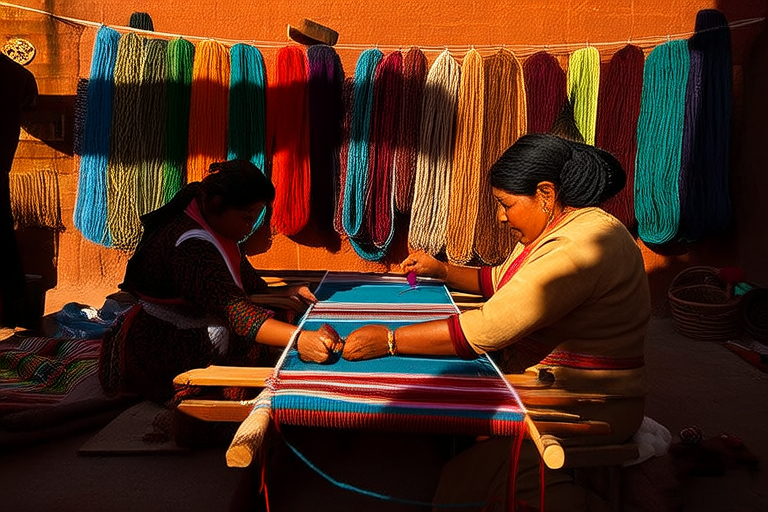Cultural Quilts: Stitching Together Diverse Traditions Worldwide

Cultural Quilts: Stitching Together Diverse Traditions Worldwide
Introduction
Quilting is more than just a craft; it is a universal language that transcends borders, connecting people through shared experiences and histories. Quilts are not merely textiles; they are vessels of culture, tradition, and personal narratives. These intricate pieces of fabric tell stories of hardship, joy, and resilience, making them invaluable artifacts in the tapestry of human history.
From the humble beginnings of patchwork blankets to the elaborate works of art found in galleries, quilts have always served as a medium for expressing cultural identity, history, and storytelling. In this article, we will explore how quilting has evolved across different regions of the world, highlighting its significance as a cultural practice that binds communities together.
Historical Context
The origins of quilting can be traced back to ancient civilizations, with evidence of quilted garments and bedding found in Egypt, China, and India. However, it was during the Middle Ages that quilting became more widespread, particularly in Europe, where it was used for both practical and ceremonial purposes. Quilts were often made by hand, using scraps of fabric to create beautiful and functional textiles.
In many parts of the world, quilting played a crucial role in preserving cultural heritage. For example, in the United States, African American quilts were created during the era of slavery, serving as maps for escaping slaves and symbols of resistance. Similarly, in Europe, quilts were used to commemorate important events, such as weddings and funerals. These textiles not only provided warmth but also acted as repositories of cultural knowledge and memory.
Regional Variations
African American Quilts
In the African American community, quilting has long been a means of cultural expression and resistance. During the era of slavery, quilts were used to communicate coded messages to escaping slaves, guiding them along the Underground Railroad. These quilts often featured bold, geometric patterns and bright colors, symbolizing freedom and hope.
Today, African American quilts continue to play an important role in preserving cultural heritage. Artists like Faith Ringgold and Bisa Butler use quilting to explore themes of identity, race, and social justice. Their work challenges viewers to confront difficult truths about America’s past while celebrating the strength and resilience of Black communities.
Indian Kantha Quilts
In India, kantha quilts are known for their delicate embroidery and vibrant colors. These quilts are typically made from recycled saris, which are layered and stitched together to create a soft, quilted fabric. The word “kantha” refers to the running stitch used to sew the layers together, creating a distinctive wavy pattern.
Kantha quilts are often used as bedcovers, wall hangings, and clothing. They are deeply rooted in Bengali culture, where women traditionally passed down their skills to younger generations. The motifs and patterns used in kantha quilts often reflect local customs and beliefs, such as the depiction of deities, animals, and nature.
Japanese Tsutsumi Quilts
Japanese tsutsumi quilts are characterized by their minimalist aesthetic and attention to detail. These quilts are often made from silk or cotton, and feature subtle, geometric patterns that reflect the influence of Buddhist and Shinto traditions. The term “tsutsumi” refers to the act of wrapping or enclosing, symbolizing protection and care.
Tsutsumi quilts are traditionally used as gifts, often given to mark important life events such as births, weddings, and funerals. They are also used as altar cloths in temples and shrines, where they serve as symbols of respect and reverence. The craftsmanship involved in creating these quilts is highly valued, and many artisans spend years perfecting their technique.
Symbolism and Meaning
Quilts are rich with symbolism, and the designs, colors, and motifs used in different cultures often carry deep meaning. For example, in African American quilts, the use of red and green fabrics may symbolize freedom and prosperity, while the presence of stars may represent guidance and hope. In Indian kantha quilts, the depiction of lotus flowers may symbolize purity and enlightenment, while the use of blue and white fabrics may represent calmness and serenity.
Quilts have also been used to convey messages of resistance and remembrance. During the Civil Rights Movement, African American quilters used their craft to challenge systemic racism and oppression. Their quilts often featured powerful images of struggle and triumph, serving as a reminder of the ongoing fight for equality and justice. Similarly, in post-war Japan, quilts were used to honor those who had lost their lives, helping to heal communities and promote peace.
Modern Interpretations
Today, contemporary artists and designers are reimagining traditional quilting techniques to create new forms of expression. Some artists are using digital technology to design quilts that incorporate elements of virtual reality and augmented reality, while others are experimenting with unconventional materials such as plastic and metal. These innovations are pushing the boundaries of what quilting can be, allowing for greater creativity and experimentation.
At the same time, quilting continues to play an important role in modern-day cultural preservation and cross-cultural exchange. Quilt exhibitions and workshops provide opportunities for people from different backgrounds to come together and share their stories, fostering understanding and empathy. Through these events, quilts help to bridge divides and build connections between communities.
Conclusion
Quilting is a global practice that has united people across generations and continents, weaving together diverse traditions into a cohesive narrative of human creativity and resilience. Whether used for practical purposes or artistic expression, quilts continue to serve as powerful symbols of cultural identity, history, and storytelling. As we move forward, it is important to recognize and celebrate the contributions of quilters from around the world, ensuring that their voices are heard and their stories are preserved for future generations.